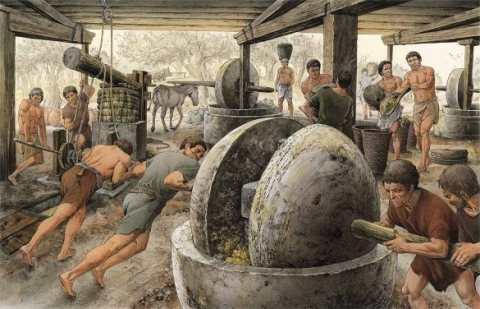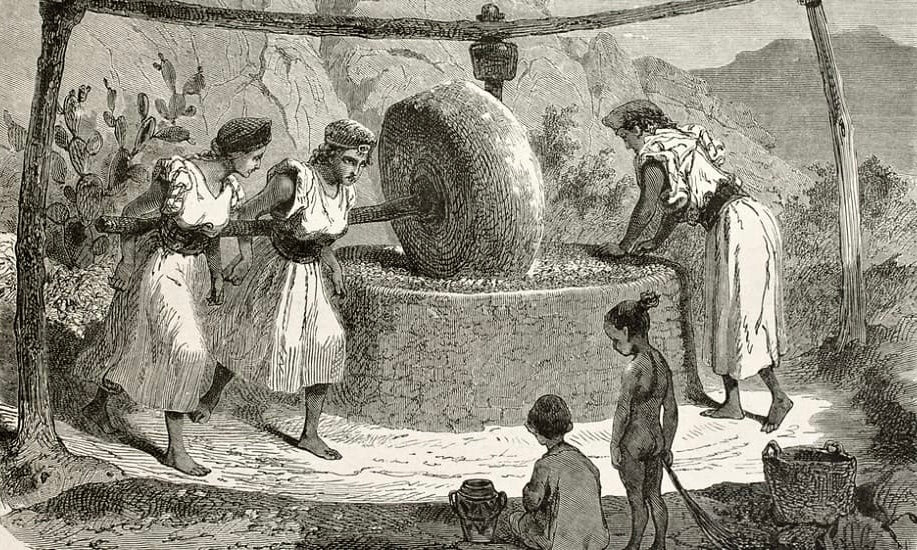Olive oil was more than a culinary ingredient in ancient Rome. It fueled lamps, was essential in bathing rituals, and served as a medicinal balm, making it indispensable in the daily lives of Romans. The importance of olive oil was so great that it spurred a vast industry involving production, trade, and transport, reflecting the sophistication and economic priorities of Roman society.
Table of Contents
ToggleOlive Oil Production in Ancient Rome
The production of olive oil typically took place on agricultural estates, or villas, where skilled labor and specialized equipment were utilized to ensure high-quality oil. Olives were harvested by hand and brought to a room called the tabulatum, which featured a waterproofed, inclined floor to collect alpechín, a byproduct used as an insecticide and herbicide.

The production process also involved careful crushing of the olives in mills called trapetum, which were specifically designed to avoid breaking the pits—a step thought essential for preserving the oil’s flavor. This initial process yielded an olive paste, which was then taken to the torcularium for pressing.
The Torcularium: Heart of Olive Oil Extraction
The torcularium was where the actual extraction took place. Equipped with powerful presses, either wooden or stone, this room allowed for significant pressure to be applied to the olive paste, maximizing oil yield. Once extracted, the oil was collected in large ceramic containers called dolia. These vessels were often partially buried to maintain stable temperatures and prevent spoilage, showcasing an impressive level of engineering foresight.
v
Storage and the Cella Olearia
Once decanted into dolia, the oil was stored in specialized rooms known as cella olearia. These storage facilities were vital in preserving olive oil quality, particularly since it could be transported across the Mediterranean for trade. The finest quality oil, oleum omphacium, was made from green, unripe olives and harvested early in the season, often in September. This premium oil was reserved for the wealthiest households and prized for its rich taste and purity.
Hispania: The Empire’s Olive Oil Powerhouse
Spain, or Hispania as it was known, became a major hub for olive oil production, particularly in the regions that now encompass Andalucía. The superior quality of Hispania’s olive oil made it a staple in Roman exports, supplying the entire Mediterranean region. This trade positioned olive oil as a crucial commodity that sustained not only Rome’s economy but also its social structure.

Olive Oil’s Role in Roman Culture and Economy
The role of olive oil extended beyond practical uses. In Rome, it symbolized prosperity, culture, and refinement, as it was involved in nearly every aspect of daily life, from food and medicine to bathing and lighting. The extensive industry surrounding olive oil production demonstrated Roman advancements in agriculture, engineering, and trade, while also highlighting the social and economic hierarchies of the time.

